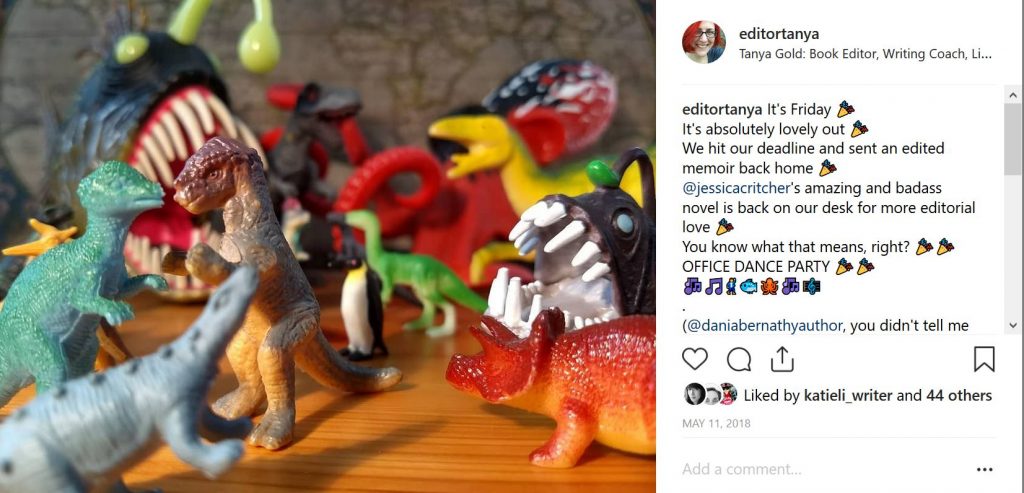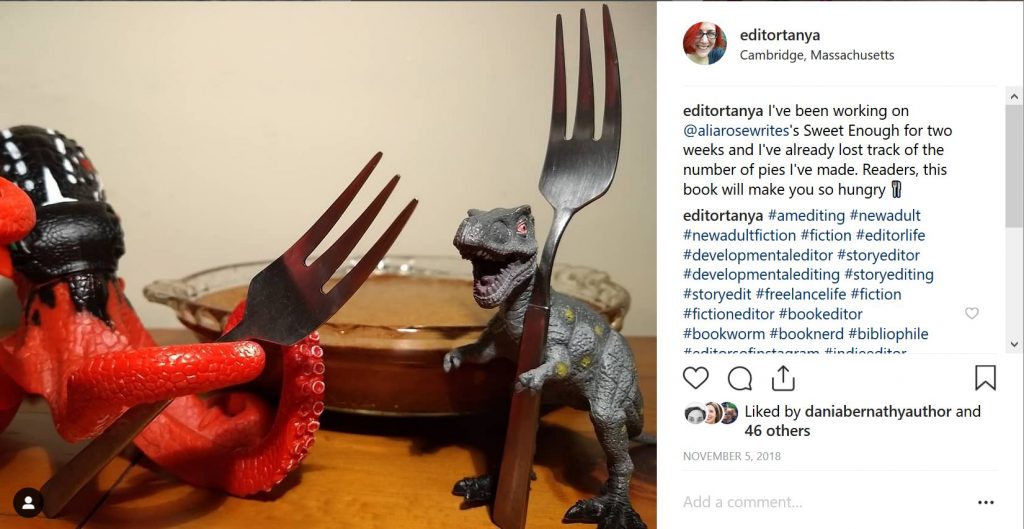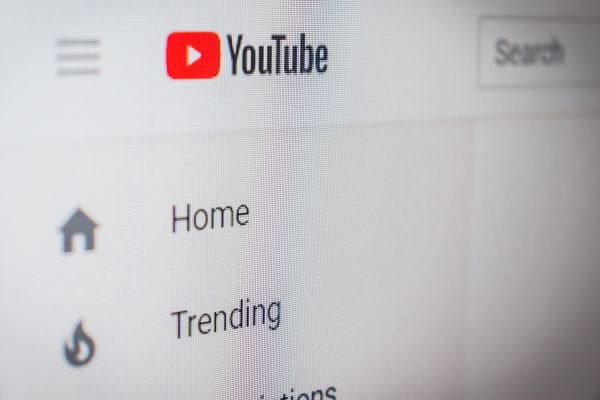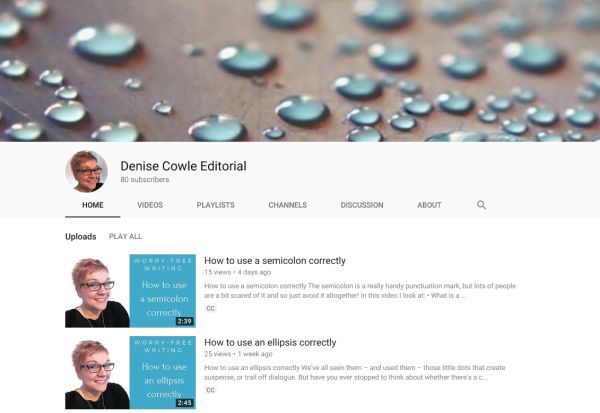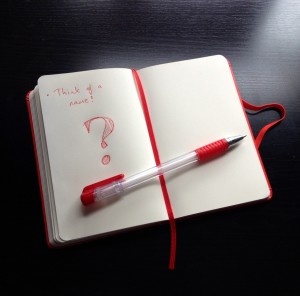Continuing the series of posts about editors and social media, Tanya Gold takes us to the world of Instagram and tells us how she turns her working with words into striking pictorial snapshots.
When and why did you start?
In 2015, I was chatting with some clients on Twitter and they were raving about this social media platform that was image-centric. It sounded like they were having a bunch of fun interacting with other writers there, so I decided to check it out.
I immediately loved how visual Instagram is and how you can use it to connect with new people on a variety of topics. Since I started posting about three and a half years ago, I’ve met all sorts of cool writers, photographers, illustrators, plastic dinosaur enthusiasts, and other creatives. I’ve even made some IRL friends and landed a few amazing clients.
What do you share?
I post about the books I’m reading, interesting things that I see around town or while travelling, literary activities, and my editing life (often illustrated by my editorial assistants). If I had to sum it up in a hashtag, it would be #editorlife.
I post about a lot of things, but I know that most of my followers come and stay for my editorial assistants. I get it. They throw the best office dance parties.
I work with a lot of authors who are active on social media. And I like to involve them in my posts – tagging them when I’m working on their projects (with their permission, and always keeping it very general and positive). This means that they get more people hearing about their books and gives them an opportunity to interact with more readers. I’ve had a number of clients ask for specific assistants to be featured in posts about their book or to be mentioned in a dance party.
It’s a lot of fun to interact with clients in this way. It also encourages them to share the images or to post about me, which puts my name in front of other writers and encourages word of mouth referrals.
When do you share?
I try to post photos at least a couple of times a week. If I’m travelling, about one picture a day. I try to limit myself to one photo a day. It’s about finding a balance. I don’t want to bombard people with photos and I want to stay present in their minds.
For other platforms, I schedule one post a week to make sure that I’m still active – even when life gets in the way. Instagram is the one platform where I don’t schedule anything. I want the images to reflect what is happening at that moment in my #editorlife.
Why do you do it?
What I love most about Instagram is that it’s about posting original content. Sometimes, I find it frustrating that I can’t share links and articles with my followers there, but that’s also part of its beauty. This limitation makes us share parts of ourselves, which can help to encourage more meaningful connections.
And I get to talk with people about books A LOT. It’s such a happy place.
What about other social media platforms?
Just like on Instagram, I like other social media platforms for the connections they allow me to make. I love Facebook for its editor groups, Twitter for its chats, Goodreads for all the books. All social media platforms offer different ways of interacting and forming communities. It’s a beautiful thing. It’s allowed me to make so many wonderful connections.
Any advice?
All social media is about interacting with people. Find your people. On Instagram, you can do this by looking up friends or by exploring what other people are posting.
Try out an Instagram #monthlychallenge if you want prompts to get you started. Take pictures of your #catsofinstagram. Post some #shelfies. Check out hashtags that are relevant to your interests. See what other people are posting on the same topic.
Interact with strangers. You never know what amazing people you might meet.
 Tanya Gold is a book editor, writing coach, and literary omnivore based in Cambridge, Massachusetts. She’s been in publishing for about twenty years, and has worked on all kinds of cool books. These days, she edits fiction, creative nonfiction, and poetry. It’s been suggested that she reads too much for her own good. This might be true. Perhaps unsurprisingly, you can follow her on Instagram.
Tanya Gold is a book editor, writing coach, and literary omnivore based in Cambridge, Massachusetts. She’s been in publishing for about twenty years, and has worked on all kinds of cool books. These days, she edits fiction, creative nonfiction, and poetry. It’s been suggested that she reads too much for her own good. This might be true. Perhaps unsurprisingly, you can follow her on Instagram.
Posted by Abi Saffrey, CIEP blog coordinator.
The views expressed here do not necessarily reflect those of the CIEP.


